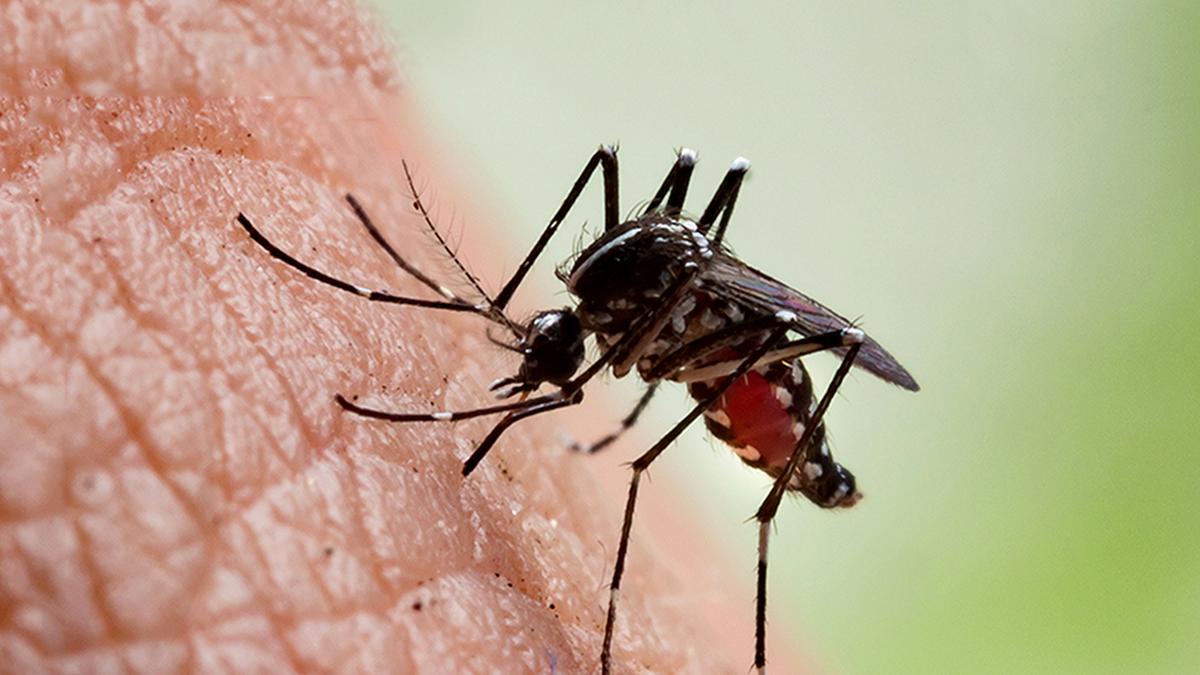Science
Community Factors Drive Chikungunya Outbreak Severity, Study Reveals

A recent analysis has highlighted that local conditions such as housing quality, mosquito populations, and community responses play a more significant role in predicting the severity of chikungunya outbreaks than climate factors like temperature and rainfall. This finding comes from a comprehensive study of 86 past outbreaks, including a notable case in Port Blair, India, published in the journal Science Advances.
Researchers from the University of Notre Dame, among other institutions, emphasized the need for innovative approaches that extend beyond traditional climate assessments in understanding chikungunya’s spread. The chikungunya virus, transmitted through mosquito bites, can lead to debilitating symptoms, including high fever and severe joint pain, with nearly 50 percent of those infected potentially suffering from long-term pain and disability.
Alex Perkins, a professor of infectious disease epidemiology, noted that while climate variables can indicate where outbreaks may occur, they are not reliable indicators of their severity. “Conditions of a locality matter—things like housing quality, mosquito density, and how communities respond,” Perkins stated. He also acknowledged that some variations in outbreak severity could stem from chance, underscoring the complexity of the issue.
India bears a significant burden of chikungunya infections, with a recent study published in the British Medical Journal (BMJ) Global Health estimating that approximately 51 lakh people are at risk of infection each year. Currently, no specific treatments exist for this viral infection, although two preventive vaccines have received approval for use in certain countries, including the United States. Unfortunately, these vaccines are not widely accessible in regions where the virus is most prevalent.
The findings from this study could be instrumental in improving predictive models for chikungunya outbreaks, allowing public health officials to better prepare and respond. By focusing on local conditions, health authorities can enhance their strategies for vector control and community engagement, ultimately protecting vulnerable populations.
The research team highlighted that additional data related to vector control efforts, housing quality, and urban development could significantly improve estimates of the transmissibility ratio, despite these data being less readily available than climate variables.
In summary, this study illustrates the importance of a holistic approach to understanding chikungunya outbreaks. By prioritizing local conditions and community responses, public health officials can develop more effective measures to combat this infectious disease and support vaccine development efforts.
-

 World5 months ago
World5 months agoSBI Announces QIP Floor Price at ₹811.05 Per Share
-

 Lifestyle5 months ago
Lifestyle5 months agoCept Unveils ₹3.1 Crore Urban Mobility Plan for Sustainable Growth
-

 Science4 months ago
Science4 months agoNew Blood Group Discovered in South Indian Woman at Rotary Centre
-

 World5 months ago
World5 months agoTorrential Rains Cause Flash Flooding in New York and New Jersey
-

 Top Stories5 months ago
Top Stories5 months agoKonkani Cultural Organisation to Host Pearl Jubilee in Abu Dhabi
-

 Sports4 months ago
Sports4 months agoBroad Advocates for Bowling Change Ahead of Final Test Against India
-

 Science5 months ago
Science5 months agoNothing Headphone 1 Review: A Bold Contender in Audio Design
-

 Top Stories5 months ago
Top Stories5 months agoAir India Crash Investigation Highlights Boeing Fuel Switch Concerns
-

 Business5 months ago
Business5 months agoIndian Stock Market Rebounds: Sensex and Nifty Rise After Four-Day Decline
-

 Sports4 months ago
Sports4 months agoCristian Totti Retires at 19: Pressure of Fame Takes Toll
-

 Politics5 months ago
Politics5 months agoAbandoned Doberman Finds New Home After Journey to Prague
-

 Top Stories5 months ago
Top Stories5 months agoPatna Bank Manager Abhishek Varun Found Dead in Well









